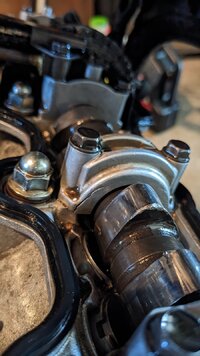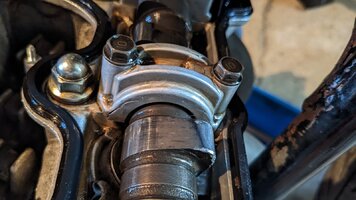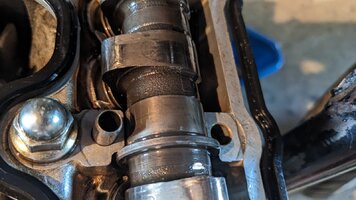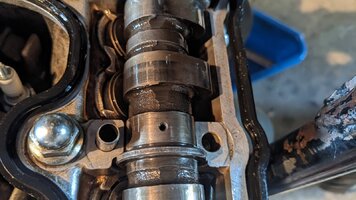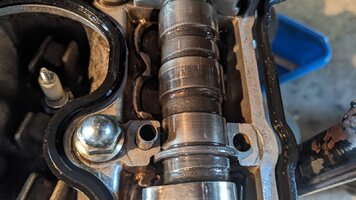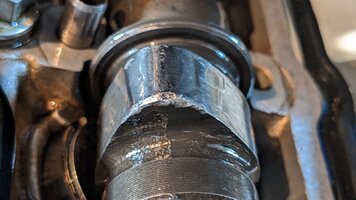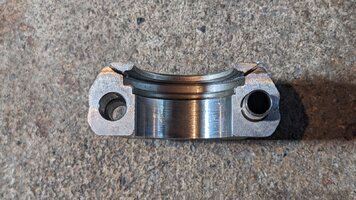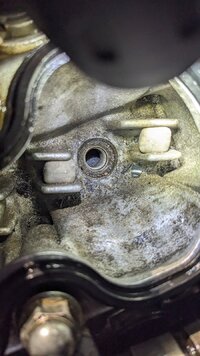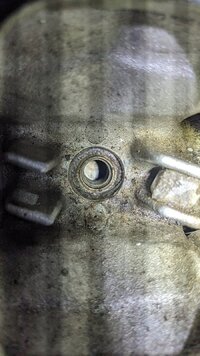millsmobile
CB750 Enthusiast
Got this bike a couple weeks ago, not running. Changed out alternator rotor, fresh plugs, fresh gas, started right up but was rough, ran it just enough to get warm and then drained the oil. (Compression tested 150, 150, 120, and 90. )
Took off the valve cover today to check valve clearances, which are a mess, and also discovered a crack in the D cam bearing cover. The #4 exhaust valve next to that cam was super tight, the .0015 didn't fit. There's also damage to one edge of the cam lobe, it's sharp.
Is this a teardown or can I replace that cover, smooth the cam, adjust clearances and run it? I'm assuming it would have made horrendous noise if that valve were bent or broken. Was hoping this bike was a quick fix of the rotor but now I'm trying to decide if I want to toss it back on marketplace, fix it to run, or rebuild the whole thing.
Took off the valve cover today to check valve clearances, which are a mess, and also discovered a crack in the D cam bearing cover. The #4 exhaust valve next to that cam was super tight, the .0015 didn't fit. There's also damage to one edge of the cam lobe, it's sharp.
Is this a teardown or can I replace that cover, smooth the cam, adjust clearances and run it? I'm assuming it would have made horrendous noise if that valve were bent or broken. Was hoping this bike was a quick fix of the rotor but now I'm trying to decide if I want to toss it back on marketplace, fix it to run, or rebuild the whole thing.

